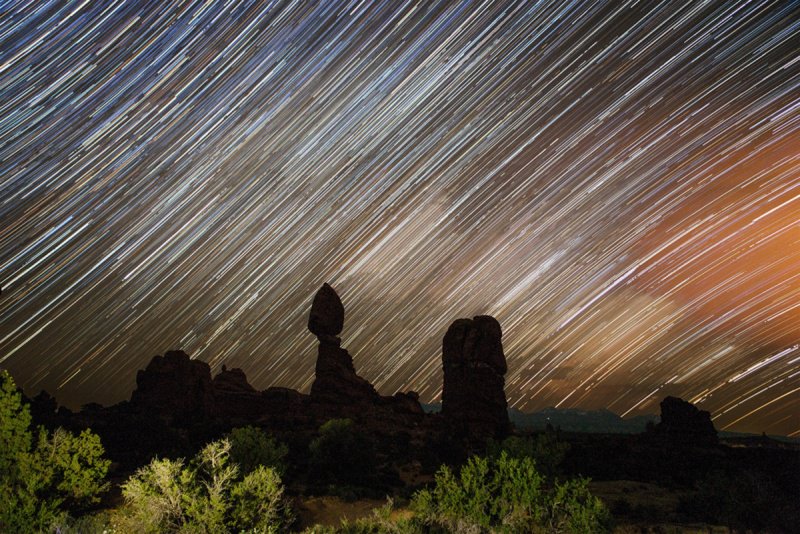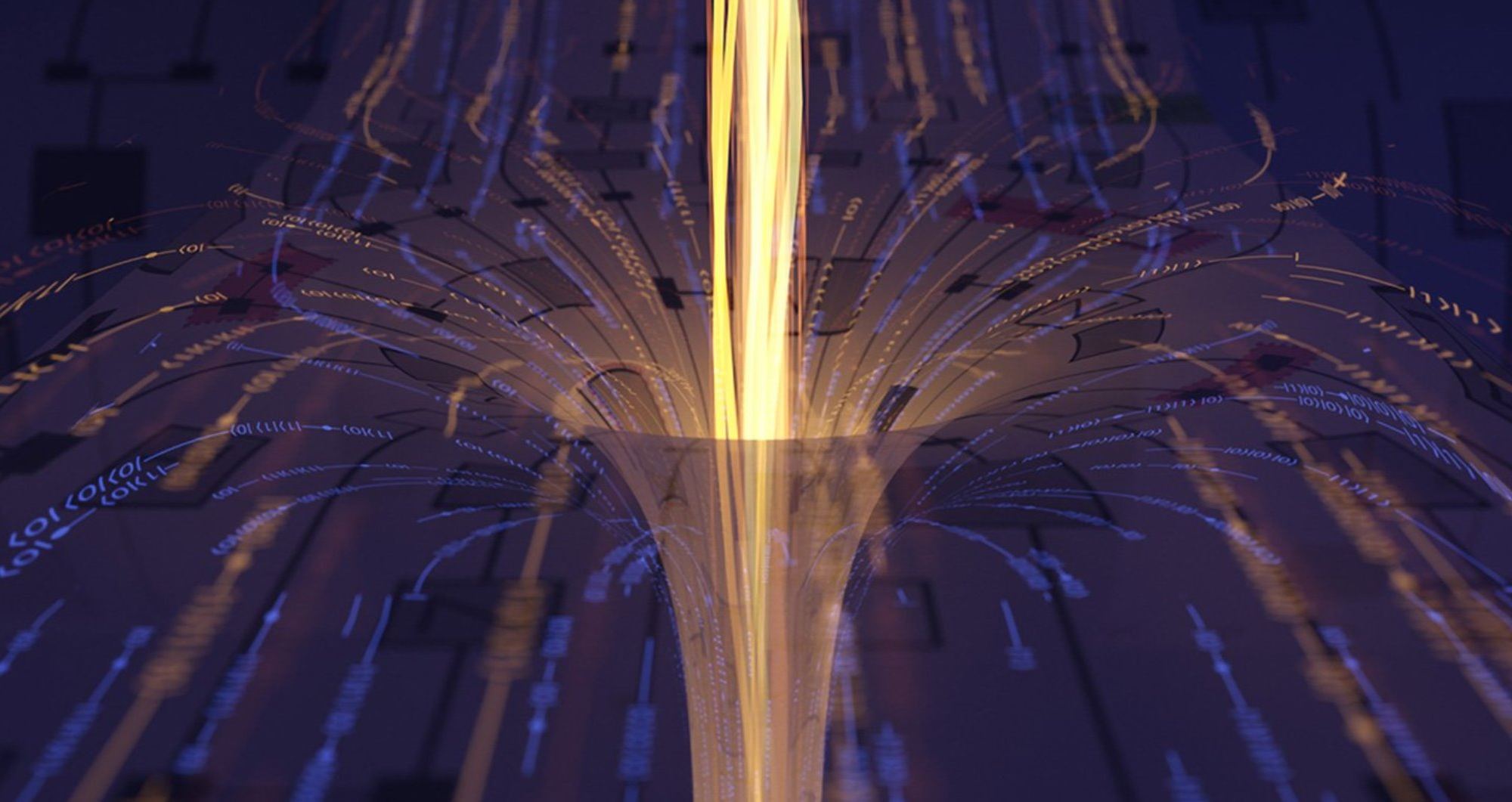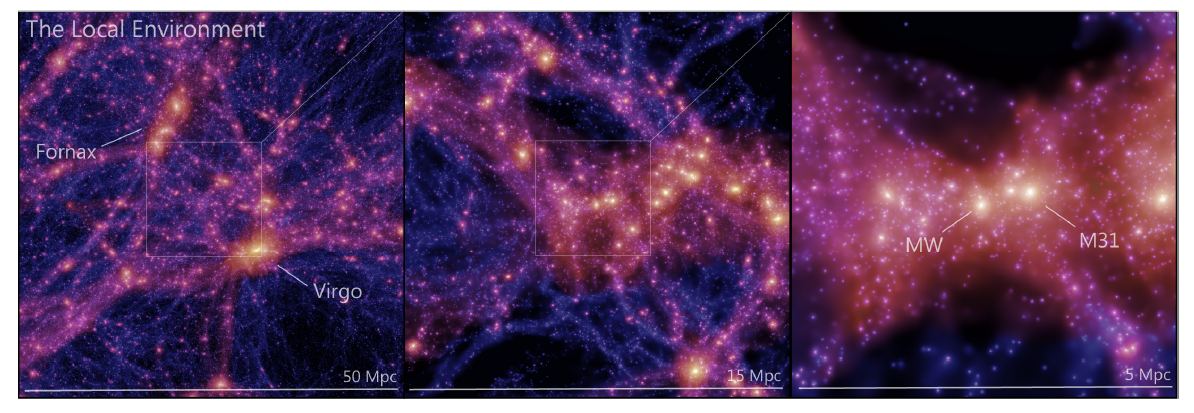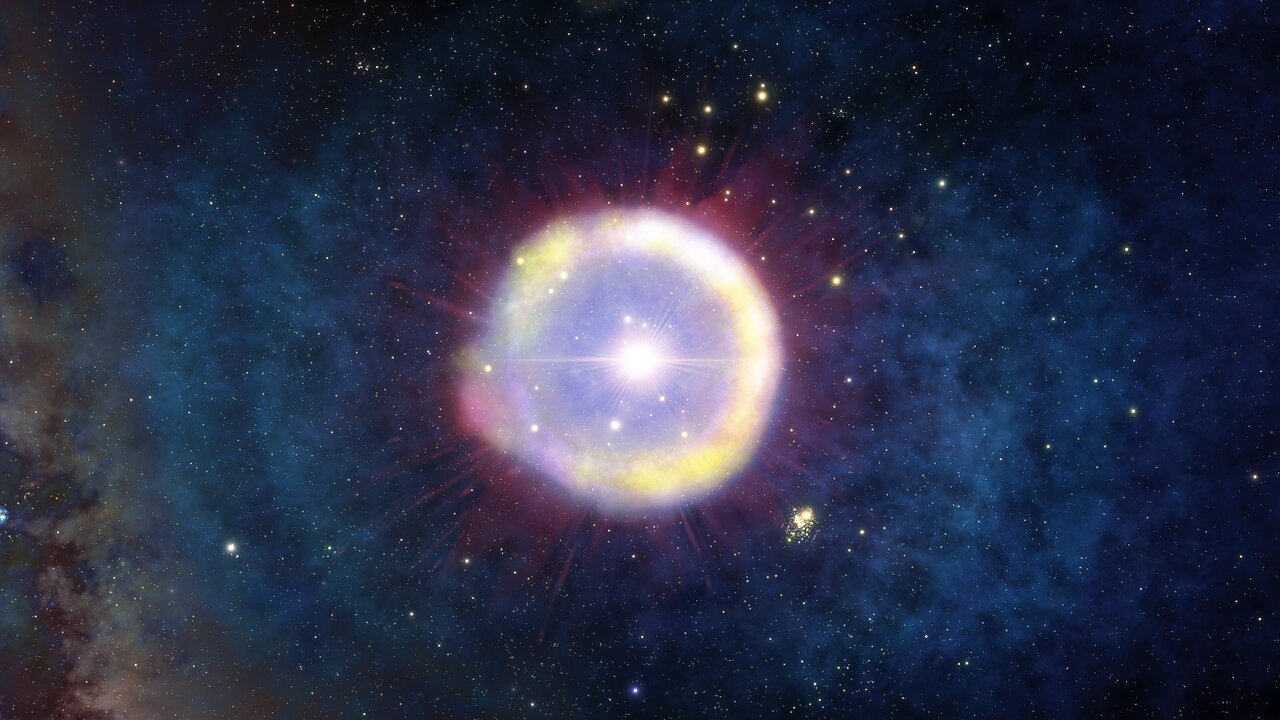It turns out that time travel into the past is actually relatively easy. All you need to do is make the universe rotate.
Continue reading “How a Rotating Universe Makes Time Travel Possible”How a Rotating Universe Makes Time Travel Possible


It turns out that time travel into the past is actually relatively easy. All you need to do is make the universe rotate.
Continue reading “How a Rotating Universe Makes Time Travel Possible”The large scale structure of the universe is dominated by vast empty regions known as cosmic voids. These voids appear as holes hundreds of millions of light years across in the distribution of galaxies. However, new research shows that many of them may surprisingly still be filled with dark matter.
Continue reading “The Voids Closest to Us May Not be Entirely Empty”In 1916, Einstein finished his Theory of General Relativity, which describes how gravitational forces alter the curvature of spacetime. Among other things, this theory predicted that the Universe is expanding, which was confirmed by the observations of Edwin Hubble in 1929. Since then, astronomers have looked farther into space (and hence, back in time) to measure how fast the Universe is expanding – aka. the Hubble Constant. These measurements have become increasingly accurate thanks to the discovery of the Cosmic Microwave Background (CMB) and observatories like the Hubble Space Telescope.
Astronomers have traditionally done this in two ways: directly measuring it locally (using variable stars and supernovae) and indirectly based on redshift measurements of the CMB and cosmological models. Unfortunately, these two methods have produced different values over the past decade. As a result, astronomers have been looking for a possible solution to this problem, known as the “Hubble Tension.” According to a new paper by a team of astrophysicists, the existence of “Early Dark Energy” may be the solution cosmologists have been looking for.
Continue reading ““Early Dark Energy” Could Explain the Crisis in Cosmology”Constraints are critical in any scientific enterprise. If a hypothesis predicts that there should be an observable phenomenon, and there isn’t any trace of it, that’s a pretty clear indication that the hypothesis is wrong. And even false hypotheses still move science forward. So it is with astronomy and, in particular, explorations of the early universe. A paper authored by researchers at Cambridge and colleagues now puts a particularly useful constraint on the development of early galaxies, which has been a hot topic in astronomy as of late.
Continue reading “Sometimes Astronomy isn’t About What you see, but What you don’t see”
For the first time, scientists have created a quantum computing experiment for studying the dynamics of wormholes — that is, shortcuts through spacetime that could get around relativity’s cosmic speed limits.
Wormholes are traditionally the stuff of science fiction, ranging from Jodie Foster’s wild ride in “Contact” to the time-bending plot twists in “Interstellar.” But the researchers behind the experiment, reported in the Dec. 1 issue of the journal Nature, hope that their work will help physicists study the phenomenon for real.
“We found a quantum system that exhibits key properties of a gravitational wormhole, yet is sufficiently small to implement on today’s quantum hardware,” Caltech physicist Maria Spiropulu said in a news release. Spiropulu, the Nature paper’s senior author, is the principal investigator for a federally funded research program known as Quantum Communication Channels for Fundamental Physics.
Don’t pack your bags for Alpha Centauri just yet: This wormhole simulation is nothing more than a simulation, analogous to a computer-generated black hole or supernova. And physicists still don’t see any conditions under which a traversable wormhole could actually be created. Someone would have to create negative energy first.
Continue reading “Scientists Send Quantum Data Through a Simulated Wormhole”
According to the Standard Model of Particle Physics, the Universe is governed by four fundamental forces: electromagnetism, the weak nuclear force, the strong nuclear force, and gravity. Whereas the first three are described by Quantum Mechanics, gravity is described by Einstein’s Theory of General Relativity. Surprisingly, gravity is the one that presents the biggest challenges to physicists. While the theory accurately describes how gravity works for planets, stars, galaxies, and clusters, it does not apply perfectly at all scales.
While General Relativity has been validated repeatedly over the past century (starting with the Eddington Eclipse Experiment in 1919), gaps still appear when scientists try to apply it at the quantum scale and to the Universe as a whole. According to a new study led by Simon Fraser University, an international team of researchers tested General Relativity on the largest of scales and concluded that it might need a tweak or two. This method could help scientists to resolve some of the biggest mysteries facing astrophysicists and cosmologists today.
Continue reading “Einstein's Predictions for Gravity Have Been Tested at the Largest Possible Scale”Johns Hopkins University (JHU) continues to pad its space community résumé with their interactive map, “The map of the observable Universe”, that takes viewers on a 13.7-billion-year-old tour of the cosmos from the present to the moments after the Big Bang. While JHU is responsible for creating the site, additional contributions were made by NASA, the European Space Agency, the National Science Foundation, and the Sloan Foundation.
Continue reading “Scroll Through the Universe with This Cool Interactive Map”
Something huge lurks in the shadows of the Universe. Known as the Great Attractor, it is causing the Milky Way and all the surrounding galaxies to rush towards it. We would normally have a better understanding of this situation, except for the fact that the Great Attractor happens to lie in the direction behind the galactic bulge, which makes it difficult for us to observe. A team of astronomers have performed a new infrared survey of the region behind the bulge, and they have found yet another large galaxy cluster. Their work is helping to paint a more complete portrait of the environment of the Great Attractor.
Continue reading “Chipping Away at the Great Attractor Mystery. Another Galaxy Cluster Found Behind the Milky Way’s Disk”In 2011, the Nobel Prize in physics was awarded to Perlmutter, Schmidt, and Reiss for their discovery that the universe is not just expanding, it is accelerating. The work supported the idea of a universe filled with dark energy and dark matter, and it was based on observations of distant supernovae. Particularly, Type Ia supernovae, which have consistent light curves we can use as standard candles to measure cosmic distances. Now a new study of more than 1,500 supernovae confirms dark energy and dark matter, but also raises questions about our cosmological models.
Continue reading “Astronomers Chart the Influence of Dark Matter and Dark Energy on the Universe by Measuring Over 1,500 Supernovae”
According to the predominant cosmological model, the first stars in the Universe formed roughly 100,000 years after the Big Bang. Known as Population III stars, these early stellar masses were very large, short-lived, and contained virtually no metals or heavier elements. Over time, elements like carbon, nitrogen, oxygen, and iron formed in their interiors through nucleosynthesis. When these stars reached the end of their lifespans, they exploded in a supernova many times greater than anything we see today (a “super-supernova”), causing these elements to be dispersed throughout the cosmos.
For decades, astronomers have been attempting to find evidence of these earliest stars, yet all attempts to date have failed. But thanks to a recent study, a team led by the University of Tokyo thinks they may have finally spotted the first traces of one of the earliest stars in the Universe. While analyzing data previously obtained by the Gemini North telescope of the most distant quasar ever observed, the team noticed a massive cloud of material around it. Based on their analysis, they believe the material came from a first-generation star after it went “super-supernova.”
Continue reading “Astronomers see Tantalizing Evidence for one of the First Stars to Form in the Universe”